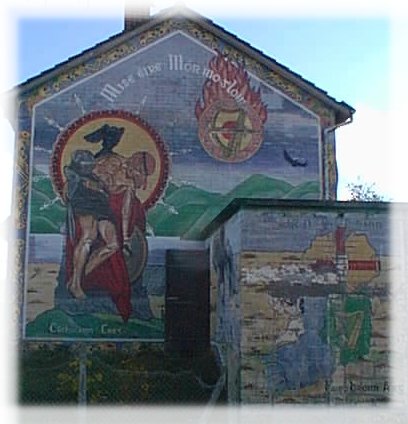Probably based on actual events, the Ulster Cycle of tales constitutes the oldest corpus of secular literature in all of western Europe. It is a cause of great local pride that we of Iubhair Cinn Tragha …
… the ‘yew tree at the head of the strand’, figure prominently more than once in these legends. Below we print one such tale. Remember that this was when the Romans ruled the world and Jesus walked the region we now call the
This of course begs the question whether S Patrick himself gave its name to our town when he reputedly planted ‘the yew tree’ (located somewhere, it’s said, in the
But it was of a more direct forbear of mine I wished to speak: my namesake Cuchullain (I am Mac Cu Uladh).
Though Cuchullain was married to the lovely Emer, he had wandering eyes. He took a fancy for Fand, the wife of the King of the Sea, Manannan MacLir. They had a torrid and protracted affair but Cuchullain knew he’d have to return to
‘In whatever place you tell me to go and meet you, I will go there’.
So the place agreed was at Ibar Cinn Tracta.
But when Emer learned of this, she had knives made ready with which to kill Fand, and she assembled fifty young girls to aid her and then travelled to the place where they had agreed to meet.
There was a confrontation between Emer and Fand at Ibar Cinn Tracta and a great battle ensued. It was only eventually through the intercession of Manannan MacLir, her husband, that Fand’s life was saved.
Cuchullain’s own greatest exploits, defending
